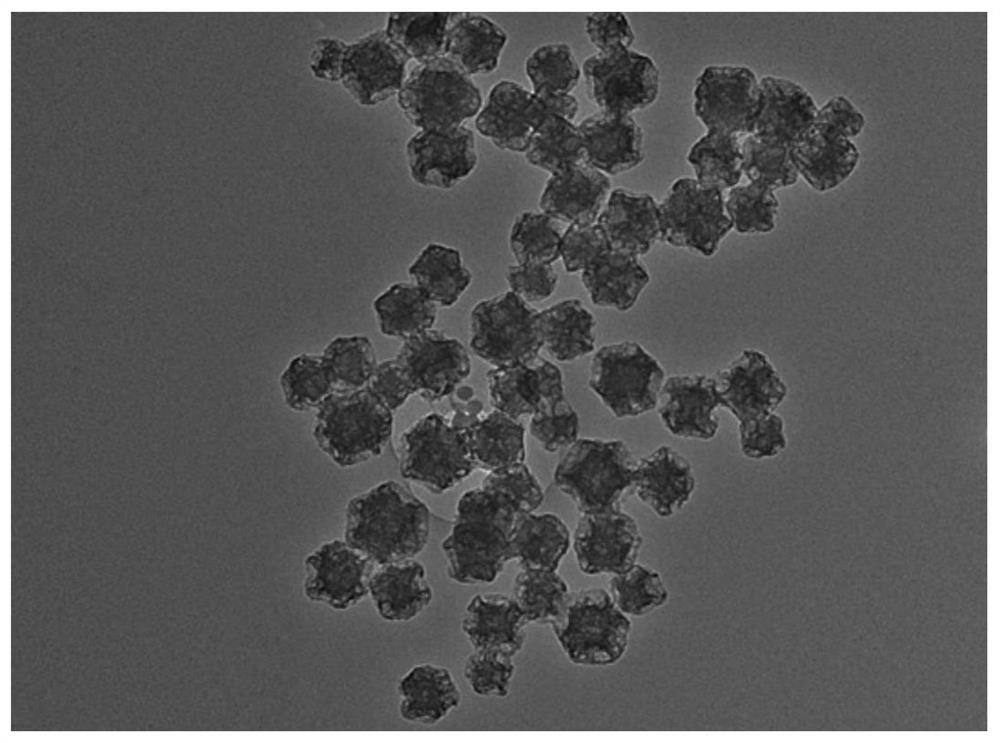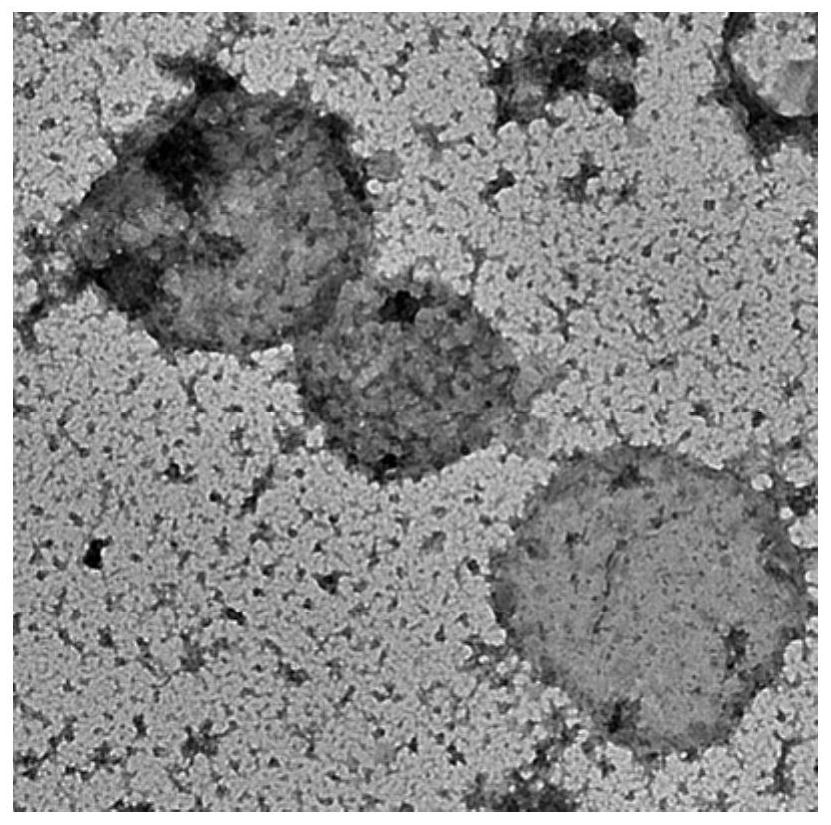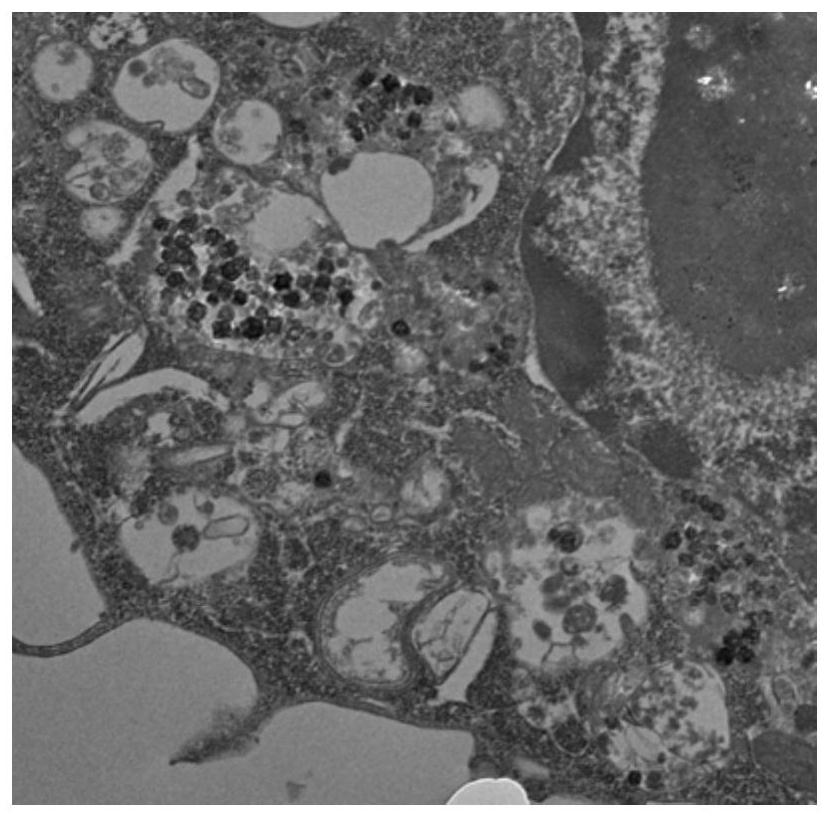A kind of preparation method of lysosomal membrane coating nanoparticle
A nanoparticle and lysosomal membrane technology, which is applied to medical preparations with non-active ingredients, medical preparations containing active ingredients, and pharmaceutical formulas, etc., can solve the damage, loss and low encapsulation efficiency of biologically active proteins in membrane structures. And other issues
- Summary
- Abstract
- Description
- Claims
- Application Information
AI Technical Summary
Problems solved by technology
Method used
Image
Examples
Embodiment 1
[0048] Nanoparticle PMCS TEM figure 1 As shown, the size of PMCS nanoparticles is 140 nm. TEM image of lysosome figure 2 As shown, the lysosome size is 450 nm.
example 2
[0050] Observation of macrophages engulfing PMCS nanoparticles and internalizing them in lysosomes. First, macrophages were inoculated into 6-well plates at a concentration of 400,000 cells per well, and incubated in an incubator. Replace the old culture medium in the 6-well plate with 50 μg / mL PMCS nanoparticles dispersed in DMEM. Cells were washed with PBS buffer and collected by centrifugation. Wash twice with PBS. The pellet was fixed in a PBS solution with a volume fraction of 2.5% glutaraldehyde and 4% paraformaldehyde. biological transmission electron microscope Figure 4 As shown, the extracted lysosomal membrane-coated nanoparticle PMCS is a vesicle-like particle with a single-layer membrane structure on the outside, with a particle size of 450 nm, and contains PMCS nanoparticles inside. In addition, the three potentials of PMCS, lysosome and lysosomal membrane-coated nanoparticle PMCS are as follows: Figure 5 shown. They are: -5.6mV, -24.7mV, -23.2mV.
Embodiment 3
[0052] (1) Macrophages were cultured in DMEM containing 10% fetal calf serum, and 100 μL of cell suspension was prepared in a 96-well plate, and 5000 cells were plated per well. The plates were pre-incubated in the incubator. After the cells adhered to the wall, the activated macrophages were stimulated for 1 h with 100 μL of lipopolysaccharide at a final concentration of 10 μg / mL. Then remove the culture medium.
[0053] (2) Add 100 μL of nanoparticles PMCS with different concentrations (6.25, 12.5, 25, 50, 100, 200 μg / mL) to the culture plate.
[0054] (3) Continue to incubate for 24 hours, add 100 μL of CCK-8 solution to each well, incubate the culture plate in the incubator for 1.5 hours, measure the absorbance with a microplate reader, and process the data. Such as Image 6 As shown, when the concentration of PMCS is greater than 50 μg / mL, the incubation time is 24 hours, and the activity of macrophages is lower than 60%. Under the premise of ensuring the activity of m...
PUM
| Property | Measurement | Unit |
|---|---|---|
| size | aaaaa | aaaaa |
| size | aaaaa | aaaaa |
| particle diameter | aaaaa | aaaaa |
Abstract
Description
Claims
Application Information
 Login to View More
Login to View More - R&D
- Intellectual Property
- Life Sciences
- Materials
- Tech Scout
- Unparalleled Data Quality
- Higher Quality Content
- 60% Fewer Hallucinations
Browse by: Latest US Patents, China's latest patents, Technical Efficacy Thesaurus, Application Domain, Technology Topic, Popular Technical Reports.
© 2025 PatSnap. All rights reserved.Legal|Privacy policy|Modern Slavery Act Transparency Statement|Sitemap|About US| Contact US: help@patsnap.com



